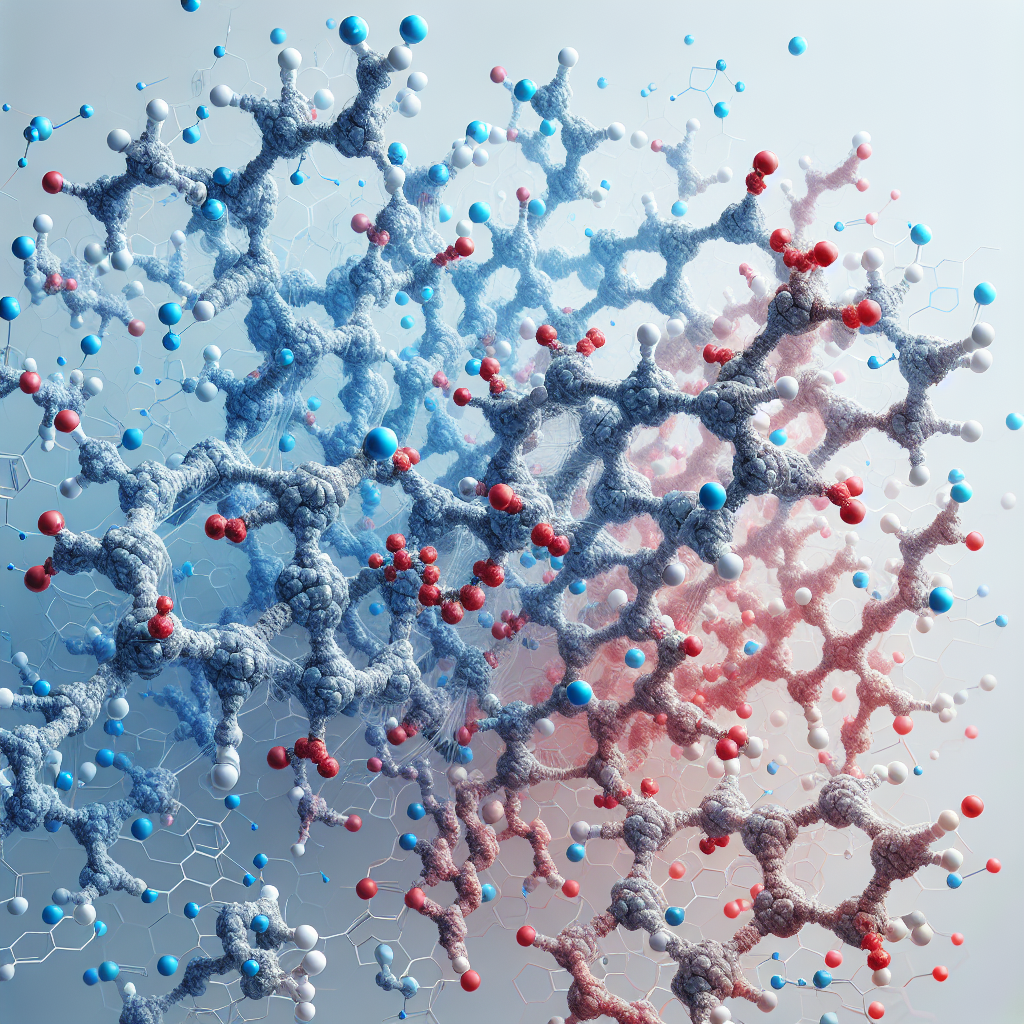In the pursuit of bigger muscles and better performance, fitness enthusiasts and athletes alike have turned to amino acid supplements for muscle growth as a staple in their nutritional arsenal. Walk into any supplement store, and you’ll find shelves lined with colorful tubs promising enhanced recovery, accelerated muscle growth, and improved strength. The marketing is convincing, and the science seems sound—amino acids are, after all, the building blocks of protein and muscle.
Are your amino acid supplements really helping your muscle growth? Or could they be secretly sabotaging your hard work in the gym? Let’s dive into what the supplement industry doesn’t want you to know.
But what if these supplements aren’t delivering on their promises? What if, despite your disciplined consumption of these products, your gains are being compromised by an issue that rarely makes it into marketing materials or product discussions? The truth is that a critical factor affecting the efficacy of amino acid supplements has been flying under the radar: purity.
The Critical Role of Amino Acids in Muscle Development
Essential Amino Acids (EAAs) are aptly named because our bodies cannot produce them—we must obtain them through diet or supplementation. Of particular importance for muscle growth are the Branched-Chain Amino Acids (BCAAs): leucine, isoleucine, and valine. Leucine, especially, acts as a trigger for muscle protein synthesis—the process by which your body builds new muscle tissue.
Glutamine, while technically a non-essential amino acid (as the body can produce it), becomes conditionally essential during intense physical stress. During grueling workouts, glutamine levels can drop significantly, potentially compromising recovery and immune function. This is why many amino acid supplements for muscle growth include generous amounts of glutamine alongside EAAs.
Research consistently demonstrates that proper amino acid supplementation, particularly timed around workouts, can significantly enhance recovery, reduce muscle soreness, and support muscle hypertrophy. A 2018 study in the Journal of the International Society of Sports Nutrition found that participants supplementing with EAAs showed improved recovery markers and greater strength gains compared to a placebo group over an 8-week training period.
For serious athletes and fitness enthusiasts, the message seems clear: amino acid supplements for muscle growth can provide a competitive edge when used strategically. But there’s a critical caveat that deserves more attention.
The Hidden Problem: Purity Issues in Amino Acid Supplements
While the benefits of amino acid supplementation are well-documented, what’s less discussed is how the purity of these ingredients dramatically impacts their effectiveness and safety. Many consumers assume all amino acid supplements for muscle growth are created equal, but this couldn’t be further from the truth.
Amino acid purity refers to the concentration of the actual amino acid versus contaminants, fillers, or by-products. High-purity amino acids typically contain 98-99% of the target compound, while lower-grade options may contain as little as 85-90%—with the remainder being various impurities.
These impurities aren’t just taking up space that could be filled with beneficial amino acids; they can actively interfere with your results and potentially compromise your health. Common contaminants include:
- Heavy metals like lead, mercury, and arsenic
- Residual solvents from the manufacturing process
- Microbial contaminants
- Cross-contamination from other compounds
- Degradation products formed during improper storage
Dr. James Wilson, a sports nutrition researcher, explains: “When you’re consuming amino acid supplements with significant impurities, you’re not only getting less of the active compound than you think, but you may also be introducing substances that can trigger inflammation or oxidative stress—the exact opposite of what you want when trying to build muscle.”
In fact, some impurities can directly interfere with muscle protein synthesis or increase cortisol levels, effectively canceling out the benefits you’re seeking from the supplement in the first place. This might explain why some users report minimal results despite consistent supplementation with amino acid products.
⚠️ Warning:
Impure amino acid supplements may not just be ineffective—they could actively hinder your fitness goals by introducing harmful contaminants into your body.
Quality Control Standards: What You Should Know
The supplement industry operates under different regulations than pharmaceuticals, which has led to significant variations in manufacturing practices and quality control. While pharmaceutical-grade amino acids must meet strict USP (United States Pharmacopeia) standards, dietary supplement ingredients often have more lenient requirements.
High-quality amino acid supplements for muscle growth should undergo rigorous testing protocols, including:
- HPLC (High-Performance Liquid Chromatography) testing to verify amino acid identity and concentration
- Heavy metal testing to ensure safety
- Microbial testing to confirm the absence of harmful bacteria
- Stability testing to ensure the product remains effective throughout its shelf life
The difference in absorption and utilization between high-purity and low-purity amino acids is substantial. A 2019 comparative study found that participants using pharmaceutical-grade amino acid supplements showed blood amino acid levels 23% higher than those using standard supplement-grade products, despite consuming identical amounts.
This translates directly to results. Higher blood amino acid levels mean more substrate available for muscle protein synthesis, faster recovery, and ultimately better gains from your training efforts. When you’re investing time, effort, and money into your fitness journey, settling for subpar ingredients makes little sense.
“The absorption efficiency of lower-purity amino acids is compromised,” notes Dr. Lisa Martinez, a sports medicine physician. “Many of my patients who switch to higher-purity amino acid supplements for muscle growth report noticeably better recovery and strength gains, even when the labeled amount of amino acids is the same.”
“The difference between good results and great results often comes down to supplement purity.”
Market Trends: Popular But Problematic
The market for amino acid supplements for muscle growth continues to expand rapidly. According to Nutrition Business Journal, sales of amino acid supplements grew by 12% in 2021 alone, reaching over $2.3 billion in the U.S. market. This explosive growth has attracted many new manufacturers to the space, intensifying competition and, unfortunately, sometimes leading to cost-cutting measures that impact quality.
A concerning industry survey revealed that among 52 popular amino acid supplements tested, only 38% contained amino acids with purity levels above 95%. The remainder contained varying levels of impurities, with some products showing concerning levels of heavy metals or microbial contamination.
Despite these findings, consumer awareness of purity issues remains low. Most purchasers base their buying decisions primarily on brand recognition, price, and flavor rather than investigating the quality of ingredients. This knowledge gap allows some manufacturers to prioritize marketability over actual effectiveness.
Forward-thinking supplement manufacturers have begun to recognize this issue and are taking steps to differentiate themselves through a focus on ingredient quality. Transparency is becoming a competitive advantage, with leading brands now sharing detailed information about their sourcing practices, testing protocols, and purity standards.
The supplement industry faces a critical choice: continue with business as usual or embrace higher standards that truly deliver on the promises made to consumers. Those who choose the latter path will likely emerge as industry leaders as consumer education around purity issues grows.
The NutraAeon Approach: Setting the Standard for Quality
At NutraAeon, we believe that the foundation of effective amino acid supplements for muscle growth begins with exceptional raw materials. Our philosophy centers on three core principles: Quality, Transparency, and Empowerment—values that directly address the purity problems plaguing many amino acid supplements today.
Our amino acid series features pharmaceutical-grade ingredients that undergo comprehensive testing beyond industry standards. Each batch is verified through multiple analytical methods to ensure consistent 98%+ purity levels—significantly higher than the industry average. This commitment to quality means that manufacturers partnering with NutraAeon can confidently create amino acid supplements for muscle growth that deliver measurable results.
Transparency is equally crucial in addressing the purity problem. NutraAeon provides complete documentation for every ingredient, including detailed Certificates of Analysis, full specifications, and manufacturing information. This level of transparency enables our manufacturing partners to make informed decisions and communicate confidently with their customers about the quality of their products.
Through our technical expertise and market insights, we empower supplement manufacturers to create products that truly stand out in a crowded marketplace. By understanding the science behind amino acid purity and its impact on effectiveness, our partners can develop superior formulations that deliver on their promises to consumers.
Moving Forward: Recommendations for Manufacturers and Formulators
For supplement manufacturers and product developers committed to creating effective amino acid supplements for muscle growth, the path forward is clear:
💡 Pro Tip:
When evaluating amino acid supplements, always ask for certificates of analysis and third-party testing results to verify purity claims.
Prioritize purity in ingredient selection: Work with suppliers who can provide detailed documentation of purity levels and testing methods. The additional cost of higher-purity amino acids is offset by superior product performance and customer satisfaction.
Implement comprehensive testing protocols: Don’t rely solely on supplier certifications. Establish your own testing program to verify the quality of incoming raw materials and finished products.
Educate consumers about quality differences: Use marketing communications to explain why ingredient purity matters and how your commitment to quality translates to better results.
Partner with reputable suppliers: Choose ingredient partners who share your commitment to quality and can provide consistent, high-purity materials with full traceability.
Stay informed about research developments: The science of amino acid supplementation continues to evolve. Maintaining awareness of new findings allows you to continuously improve your formulations.
The supplement industry has reached an inflection point where quality can no longer be an afterthought. As consumers become more educated and discerning, the manufacturers who prioritize ingredient purity in their amino acid supplements for muscle growth will establish lasting competitive advantages.
By addressing the purity problem head-on, forward-thinking supplement companies can ensure their products truly deliver the muscle growth and performance benefits consumers expect. The difference between a supplement that works and one that disappoints often comes down to what you can’t see on the label: the purity of the ingredients inside.
In the pursuit of better performance and impressive gains, don’t let impure ingredients become your limiting factor. The future of effective amino acid supplementation lies in quality without compromise—and that begins with ingredients you can trust.


